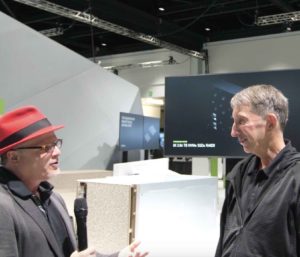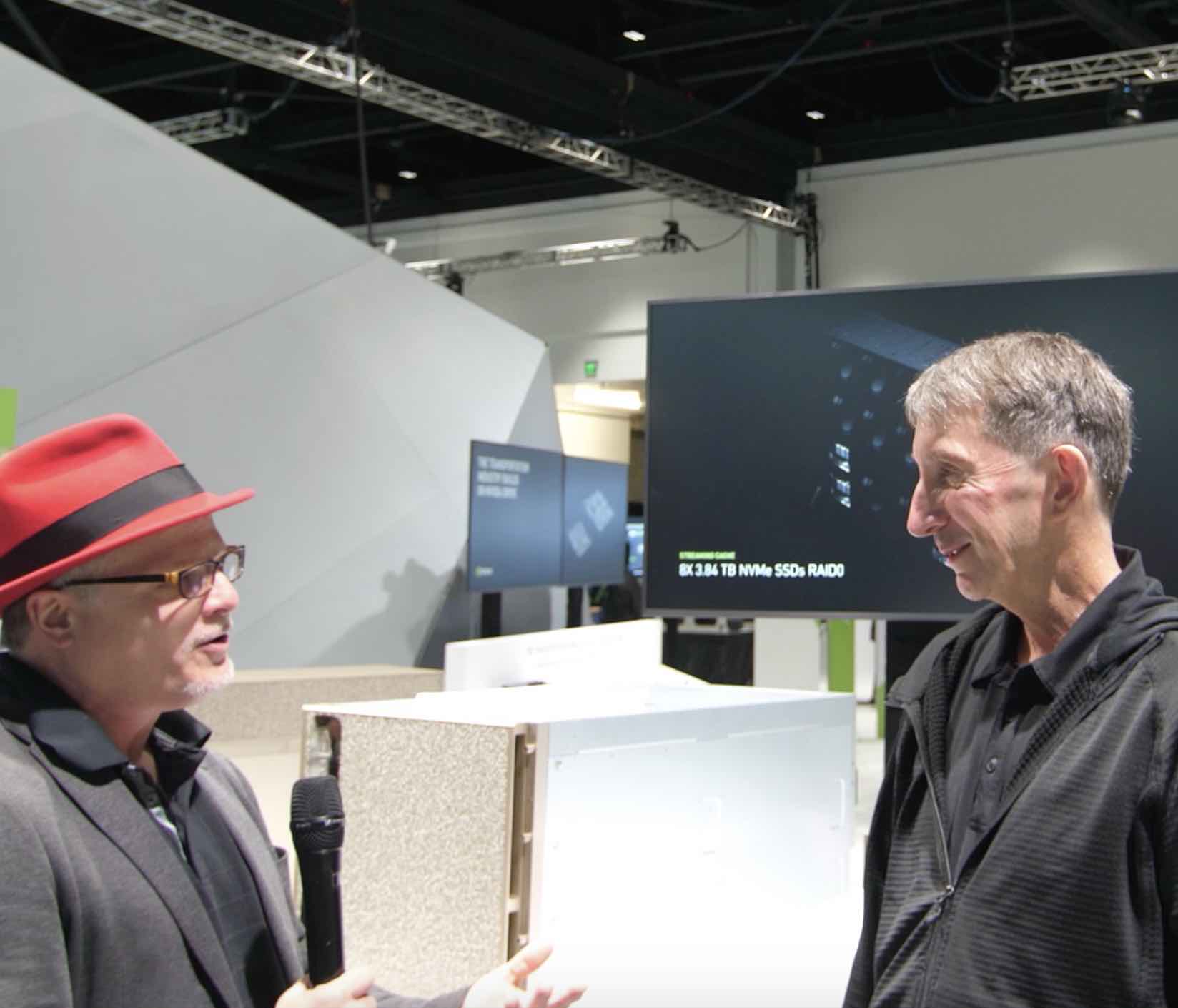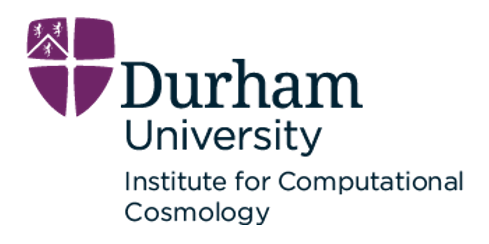 In this video from GTC 2019 in Silicon Valley, Marc Hamilton from NVIDIA describes how accelerated computing is powering AI, computer graphics, data science, robotics, automotive, and more.
In this video from GTC 2019 in Silicon Valley, Marc Hamilton from NVIDIA describes how accelerated computing is powering AI, computer graphics, data science, robotics, automotive, and more.
Highlights include:
- PRADA. NVIDIA CEO Jensen Huang described the company’s success through PRADA: Programmable Acceleration of multiple Domains with one Architecture.
- Data Science Workstation. NVIDIA has teamed with the world’s leading OEMs and system builders to deliver powerful new workstations designed to help millions of data scientists, analysts and engineers make better business predictions faster and become more productive. Purpose-built for data analytics, machine learning and deep learning, the workstations provide the extreme computational power and tools required to prepare, process and analyze the massive amounts of data used in fields such as finance, insurance, retail and professional services.
- NVIDA T4 GPU. The NVIDIA T4 GPU accelerates diverse cloud workloads, including high-performance computing, deep learning training and inference, machine learning, data analytics, and graphics. Based on the new NVIDIA Turing architecture and packaged in an energy-efficient 70-watt, small PCIe form factor, T4 is optimized for mainstream computing environments and features multi-precision Turing Tensor Cores and new RT Cores. Combined with accelerated containerized software stacks from NGC, T4 delivers revolutionary performance at scale.
- Mellanox Acquisition. The pending acquisition will unite two of the world’s leading companies in HPC. Together, NVIDIA’s computing platform and Mellanox’s interconnects power over 250 of the world’s TOP500 supercomputers and have as customers every major cloud service provider and computer maker.
Transcript:
insideHPC: Hi. I’m Rich with insideHPC. We’re here at the GPU Technology Conference in Silicon Valley. And today we’re at the Nvidia booth with Mark Hamilton. Mark, I watched the Keynote with Jensen this week. And the thing I wanted to ask you about is PRADA. What is this thing?
Marc Hamilton: Well, we always make so many great announcements at GTC. But one of the traditions Jensen has now started a few years ago is coming up with a new acronym to really make our messaging for the show very, very simple to remember. So PRADA stands for Programmable Acceleration Multiple Domains One Architecture. And that’s really what the GPU has become.
insideHPC: Not its not just about HPC anymore, right?
Marc Hamilton: So many of workloads are like HPC. And we love HPC more than ever. But it’s about having more and more workloads across the enterprise, not just off in that HPC data center.
insideHPC: Well, on that note, Jensen also talked about this new workstation centered around data science as a workload. What is that device?
Marc Hamilton: Workstations don’t get a lot of press a lot of times. And when you think of a workstation, you think of that Nvidia GPU and your traditional design apps, someone at Disney animating a movie, someone at Boeing or Airbus working on an airplane design or one of the cars manufacturers car design. But there’s a new type of work station. And it’s differentiated, not by a different GPU, but by different software. We’re calling that the data science workstation. It’s based on our newest Quadro RTX 8000 or RTX 6000 cards. And, in a very sort of standard cost workstation, you can get two RTX 8000s and 96 GB of NVLink connected memory. And this just opens up a whole range of new data science type of processing that you can do on the workstation before you need to start up that large job on that back end on the cluster.
insideHPC: So that’s at the desk side. But what about things like the T4 that people are deploying out there in the hyper-scale?
Marc Hamilton: Yeah. So, I think, when T4 first came out last year, people thought, “Oh, it’s a great GPU for inference.” And, in fact, it was designed with inference in mind. It has [inaudible]. It has, of course, FP32. It even has INT4, so people can start experimenting with that. But, as it turns out, PRADA, those multiple domains– there’s so many things that the T4 is actually good at. Certainly, for machine learning and data science with CUDA-X AI and WrapIt software, that’s going to be a scale-out problem. So going in and having this industry standard server with T4 and two T4s, four T4s– that can run any sort of application you want.
It can, of course, run our Virtual GPU Graphics Accelerated VDI software. Of course, does great in inference. It does good for video processing, data science, the new workflow, and can also do single GPU training as well. So when you think about it, when I’m an enterprise and I want to build out GPU infrastructure, you don’t want to go– you’d probably actually don’t want to go fill your data center with these. We love it when our customers do. And you’re going to have a few of these or a few DGX PODs in your enterprise. When every employee is using GPUs, you want it in every server. And when you think about it, you take some of the high-volume servers, HPE’s DL380, Dell’s R740– those account for a huge amount of the volume of servers out there and just making it super simple for all of our OEM partners salesforce to sell T4 and all of those high-volume servers that they sell day in and day out. It’s going to be really good for our customers.
insideHPC: Making accelerating computing more ubiquitous, sounds like?
Marc Hamilton: Exactly.
insideHPC: All right, Mark. So the last thing I wanted to ask you about is Mellanox. And I know you guys have been doing a lot of stuff with them over the years. Can you describe what that relationship is that you plan to continue?
Marc Hamilton: Well, of course, it was really great to have Eyal Waldman, CEO of Mellanox on stage with Jensen during the Keynote. And, of course, we’ve talked a lot last week about the acquisition, which is big news. Till that acquisition is complete, we continue to work with them as a partner. So if you step back 10 days and think about all the great things that we’ve been doing with Mellanox– now, of course, [inaudible] is known by every HBC customer. We have 10 Mellanox EDR cards in this DGX-2. So DGX POD is scaling up with Mellanox with these new data science workflows.
Now, in the enterprise, they’re typically running Ethernet. And so, when you have those DL380, those R740 servers with T4s, they’ll probably going to be connected with Ethernet because that’s what’s in every enterprise today. And Jensen showed the statistics. Running RoCE RDMA over Converged Ethernet on a Mellanox adapter with a Mellanox Cisco or Arista switch provides nearly double the performance. So that software acceleration of your Ethernet network is going to be very, very important in the future. And, in a sense, HPC continue to build big clusters. In Ethernet, your building that sort of east-west network traffic across the data center. And we’re really looking forward to the Mellanox acquisition.
insideHPC: Well, great, Mark. Hey, thanks for sharing. And I hope you have a great show this week.
Check out our insideHPC Events Calendar




